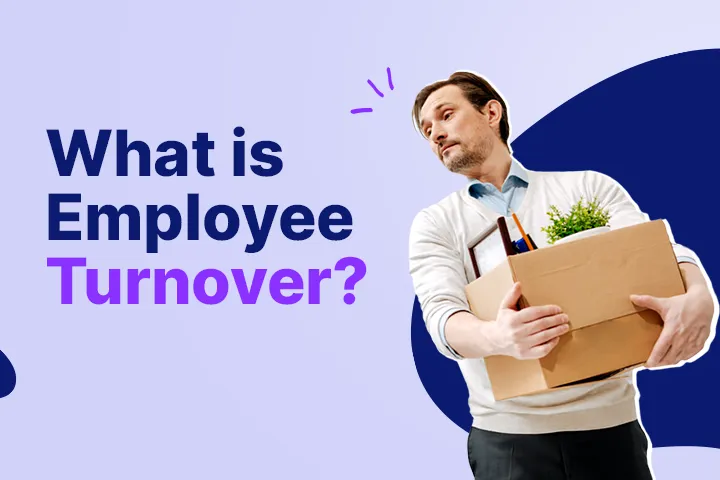You can spot bad design instantly.
A cluttered logo. Awkward colors. Fonts fighting each other.
But great design? You feel it, it’s smooth, confident, and unmistakably you.
That’s the power of a great graphic designer. And in 2025, when visual storytelling defines brand success, hiring the right one isn’t optional, it’s your competitive edge.
So how do you find a designer who can turn your brand vision into visuals that stop thumbs and build trust?
Let’s break it down.
Suggested: Graphic Designer Job Description Template
1. Start With the Right Kind of Questions
Skip the predictable “Tell me about yourself.”
Go for questions that dig into how they think, not just what they can do.
Technical Questions That Reveal Skill (Not Just Buzzwords)
🖌️ “What’s your go-to design tool, and why?”
You’ll learn whether they just use Photoshop or actually master it. Bonus points if they mention Figma, Illustrator, or After Effects, that means they can handle motion, UI, and branding all in one.
♿ “How do you make sure your designs are accessible?”
Great designers know inclusive design = smart design. Look for mentions of typography contrast, alt text, responsive layouts, and readability.
🔠 “What’s your approach to typography?”
If they talk about hierarchy, spacing, and rhythm, not just “I like this font”, you’ve found someone who gets visual psychology.
Other smart questions:
- Walk me through your design process.
- How do you maintain brand consistency across multiple platforms?
- What was your most challenging project, and how did you fix it?
Suggested: How To Interview A Graphic Designer - A Complete Guide
2. Know the Skills That Matter in 2025
The best designers aren’t just artists, they’re part psychologist, part marketer, and part problem-solver.
When evaluating candidates, look for:
- Strong fundamentals in color, balance, and typography.
- Proficiency in design software, Adobe Creative Suite, Figma, Canva, After Effects.
- An understanding of UI/UX principles and accessibility.
- Brand storytelling, the ability to design for emotion, not just aesthetics.
If they can show measurable results (like “increased click-throughs by 30% with new visuals”), that’s gold.
Suggested: Hire talented freelance graphic designers through Qureos!
3. Ask Behavioral Questions That Expose Mindset
These questions reveal how a designer thinks under pressure, handles feedback, and communicates ideas.
🎯 “Tell me about a project where you juggled multiple deadlines.”
You’re looking for someone who prioritizes without compromising quality.
🗣️ “Describe a time you had to defend your design choices.”
This shows whether they can communicate with confidence, not arrogance.
💡 “How did you adapt to last-minute client feedback?”
Creativity is one thing. Composure is another.
If they tell real stories, not rehearsed answers, you’re onto something.
4. The Skills You Can’t Teach: Soft Skills
Design is collaborative.
Even the most talented designer will fail if they can’t work with your marketing or product team.
So, assess for:
- Empathy:
Can they understand client pain points and user behavior?
- Adaptability:
Do they thrive on change or freeze under feedback?
- Communication:
Can they explain design logic in plain English?
Ask:
“How do you handle creative differences with your team?”
The right designer will talk about listening, testing, and iterating, not arguing.
5. Red Flags You Should Never Ignore
Not every creative fits every team.
If you notice these signs early, save yourself months of frustration:
🚩 No portfolio, or one filled with outdated work.
🚩 Can’t explain why they made design decisions.
🚩 Dismissive of feedback.
🚩 Designs look inconsistent or overly cluttered.
🚩 Doesn’t ask you questions about your brand.
If they’re not curious, they’re not invested.
6. What Great Hiring Looks Like
The best design hires come from conversations, not checklists.
Start with a design challenge, small, time-bound, and relevant to your brand. See how they:
- Interpret the brief
- Communicate progress
- Explain their thought process
You’ll instantly know whether they think like a designer or a pixel-pusher.
Final Thoughts
Hiring a graphic designer isn’t about finding someone who can make things look “pretty.”
It’s about finding someone who understands your audience, your message, and your mission, and turns all of that into a visual language.
When you find that person, your brand won’t just look good.
It’ll feel right.
With Qureos, you can connect with pre-vetted creative talent, streamline the hiring process, and make design hiring smarter, not harder.




